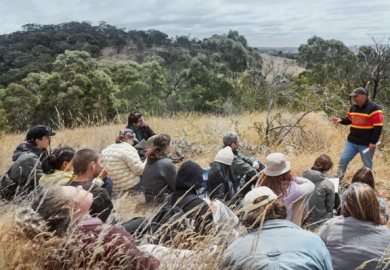Malaria is one of the great killers. The malaria parasite lives in the blood and other tissues of its human hosts and is spread by mosquitoes of the genus Anopheles. It is responsible for 2 million deaths a year, primarily in the tropics, especially among young children and pregnant women. Yet, because it chiefly afflicts the underdeveloped world, it has not received the attention and funding that have been devoted to Aids, heart disease or Alzheimer's.
Mark Honigsbaum's fascinating, handsomely produced and well-written book puts malaria, and the search for its cure, in historical perspective. He takes us through the complicated history of the search for quinine, a compound with seemingly magical properties that could quickly alleviate malaria's symptoms.
Quinine and a host of related compounds are found in the bark of trees of the genus Cinchona, which grow on the eastern and western slopes of the Andes in some of the most forbidding and inaccessible landscapes on earth. The trees were sought by early European explorers of the region, starting with the Marquis de la Condamine and Alexander von Humboldt in the 18th century. Nineteenth-century seekers of quinine ranged from the establishment figure of Clements Markham (later secretary of the Royal Geographic Society) to the decidedly non-establishment Charles Ledger, who made a career of failing in get-rich-quick schemes. The dangers faced by these explorers were formidable - one fell off a cliff, another had his head shrunk by marauding Jivaro. The Native American explorer Manuel Mamani was beaten and fatally injured by Bolivian police, who were furious that their monopoly on the magic bark was being threatened. Nonetheless, seeds of a number of Cinchona species made it to Kew Gardens and to far-flung parts of the British and Dutch empires where plantations were established.
Cinchona is a large and diverse genus, and the trees make different amounts and qualities of quinine. Trees that were eventually established in Java yielded high profits to their Dutch investors. Markham's efforts to establish "red bark" tree plantations in India were less productive of quinine but more effective from a humanitarian perspective. The crude red-bark extract was cheap and surprisingly effective.
So what has happened to quinine? Although it is now ubiquitous in gin and tonics, its effectiveness as an anti-malarial has plummeted. So has the effectiveness of its successors - atabrine, chloroquine, mefloquine and many others. In each case, because of widespread use of the drugs, the malaria parasites have evolved resistance. New drugs, notably those derived from the sweet wormwood artemisia, may briefly prove effective, but it will not be long before parasites resistant to these drugs appear. Oddly, the crude red-bark mixture holds out some hope - it contains so many different anti-malarials that it may continue to defeat the parasite.
In search of the challenges posed by malaria, Honigsbaum travelled in South America and elsewhere, tracing the routes of explorers and visiting new laboratories. He retraced Richard Spruce's journey across the high slopes of the forbidding volcano Chimborazo, and accompanied Colombian scientist Manuel Patarroyo to his monkey-filled island on the Amazon where Patarroyo is searching for a vaccine. He also visited scientists in the United States and Europe who are critical of Patarroyo's results, and who are using the new techniques of molecular biology to try to defeat the parasite.
Honigsbaum explains clearly how the shape-changing abilities of the parasite, and its ability to hide in the cells of its host, make it difficult to raise antibodies against it. He also brings his readers up to date on the difficult task of sequencing the DNA of the parasite, which has proceeded slowly because of technical difficulties. Although the author is not a scientist, he has caught the essence of the scientific challenges that face us as we try to defeat this ancient enemy.
Christopher Wills is professor of biology, University of California, San Diego, United States.
The Fever Trail: The Hunt for the Cure for Malaria
Author - Mark Honigsbaum
ISBN - 0 333 90185 1
Publisher - Macmillan
Price - £18.99
Pages - 333
Register to continue
Why register?
- Registration is free and only takes a moment
- Once registered, you can read 3 articles a month
- Sign up for our newsletter
Subscribe
Or subscribe for unlimited access to:
- Unlimited access to news, views, insights & reviews
- Digital editions
- Digital access to THE’s university and college rankings analysis
Already registered or a current subscriber?



